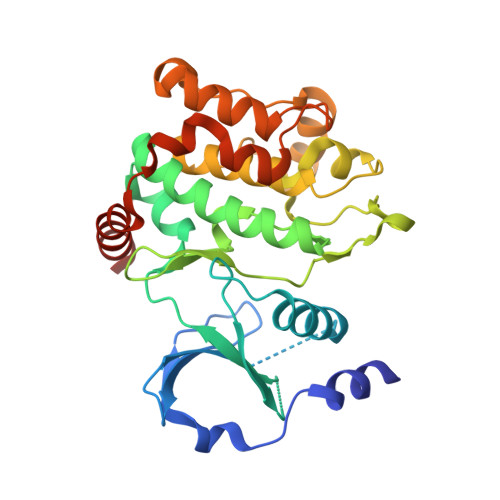Structure-Guided Design of Group I Selective p21-Activated Kinase Inhibitors.
Crawford, J.J., Lee, W., Aliagas, I., Mathieu, S., Hoeflich, K.P., Zhou, W., Wang, W., Rouge, L., Murray, L., La, H., Liu, N., Fan, P.W., Cheong, J., Heise, C.E., Ramaswamy, S., Mintzer, R., Liu, Y., Chao, Q., Rudolph, J.(2015) J Med Chem 58: 5121-5136
- PubMed: 26030457
- DOI: https://doi.org/10.1021/acs.jmedchem.5b00572
- Primary Citation of Related Structures:
4ZY4, 4ZY5, 4ZY6, 5BMS - PubMed Abstract:
The p21-activated kinases (PAKs) play important roles in cytoskeletal organization, cellular morphogenesis, and survival and have generated significant attention as potential therapeutic targets for cancer. Following a high-throughput screen, we identified an aminopyrazole scaffold-based series that was optimized to yield group I selective PAK inhibitors. A structure-based design effort aimed at targeting the ribose pocket for both potency and selectivity led to much-improved group I vs II selectivity. Early lead compounds contained a basic primary amine, which was found to be a major metabolic soft spot with in vivo clearance proceeding predominantly via N-acetylation. We succeeded in identifying replacements with improved metabolic stability, leading to compounds with lower in vivo rodent clearance and excellent group I PAK selectivity.
- #Shanghai Chempartner Inc., 998 Halei Road, Zhangjiang Hi-Tech Park, Pudong New Area, Shanghai 201203, People's Republic of China.
Organizational Affiliation:


















